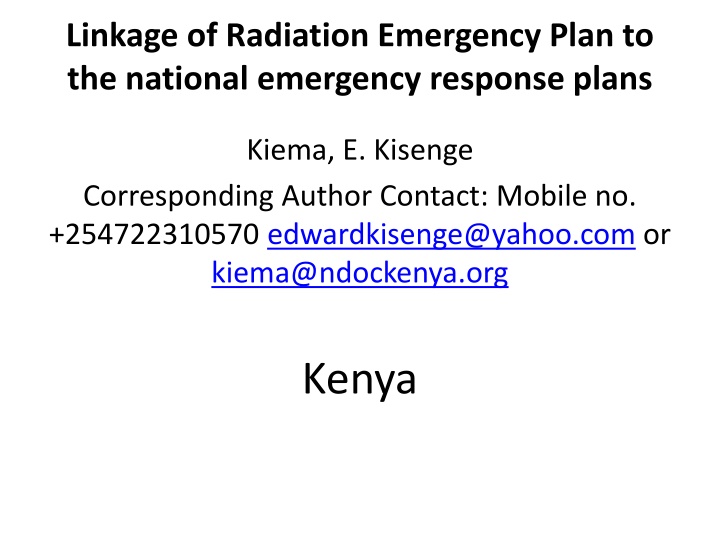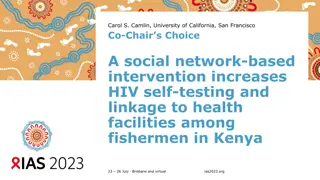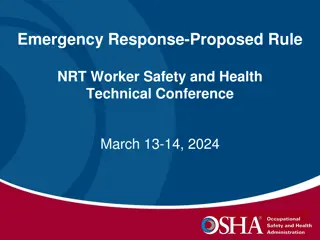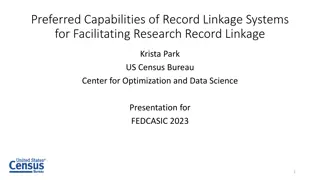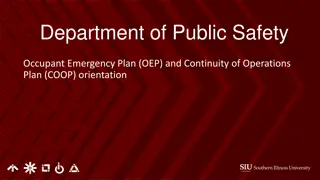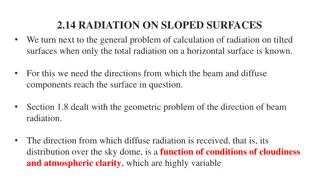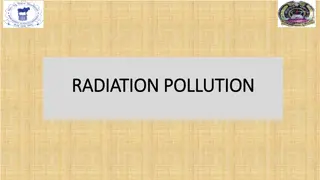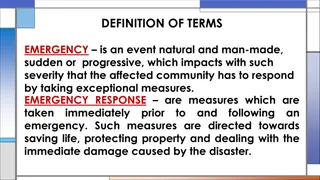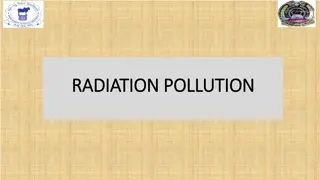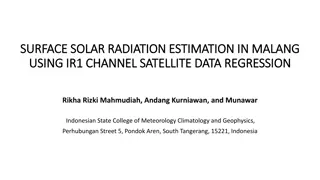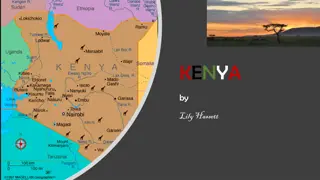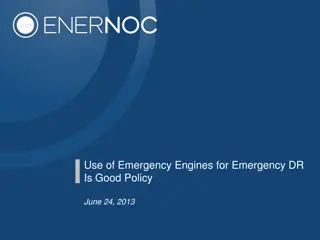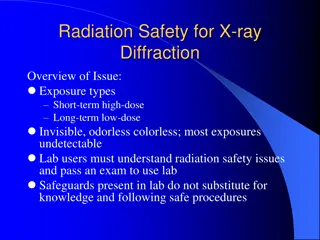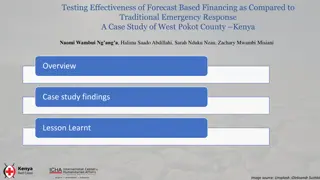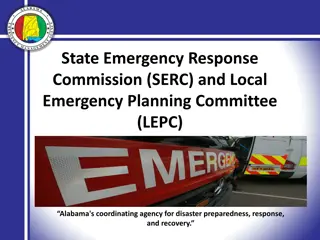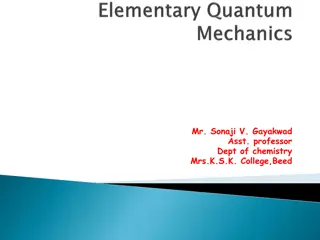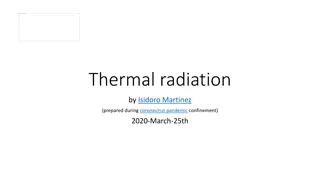Linkage of Radiation Emergency Plan to National Response Plans in Kenya
The article explores the National Radiation Emergency Plan in Kenya, detailing how authorities coordinate and respond to radiological emergencies. It discusses risk mitigation, response guidelines, stakeholder engagement, and integration with the National Response Plan for CBRN incidents.
Download Presentation

Please find below an Image/Link to download the presentation.
The content on the website is provided AS IS for your information and personal use only. It may not be sold, licensed, or shared on other websites without obtaining consent from the author.If you encounter any issues during the download, it is possible that the publisher has removed the file from their server.
You are allowed to download the files provided on this website for personal or commercial use, subject to the condition that they are used lawfully. All files are the property of their respective owners.
The content on the website is provided AS IS for your information and personal use only. It may not be sold, licensed, or shared on other websites without obtaining consent from the author.
E N D
Presentation Transcript
Linkage of Radiation Emergency Plan to the national emergency response plans Kiema, E. Kisenge Corresponding Author Contact: Mobile no. +254722310570 edwardkisenge@yahoo.com or kiema@ndockenya.org Kenya
Review methodology The article reviews International Atomic Energy Agency (IAEA) emergency preparedness and response (EPR) mannual and GSR2 and part 7 , relevant published papers published in peer reviewed journals and strategic documents in the National Disaster Operation Centre in Kenya.
NATIONAL RADIATION EMERGENCY PLAN The objective of the Radiation Emergency Plan (REP) is to establish an organized and integrated capability for timely, coordinated response by National authorities to peacetime radiological emergencies The purpose of radiation emergency plan is to address risks mitigate adverse impacts of incidents, accidents and other hazards related to radiation facilities, sources and unauthorized use of radiological materials
NATIONAL RADIATION EMERGENCY PLAN The role of national agencies will respond and organized in the event of a radiological emergency Guidelines are provided for notification of National authorities and county governments, coordination and leadership of response activities onscene, and coordination of public information activities
NATIONAL RADIATION EMERGENCY PLAN The plan describes how local authorities, and National agencies can most effectively integrate their actions The plan provides the platform of engagement with stakeholders both in public and private sectors Exercises to test preparedness and response actions for emergences and other disasters are provided for and there is monitoring to ensure quality of their services.
LINKAGE TO CBRN PLAN The radiation emergency is linked well with other existing plans to ensure complementarity of efforts Kenya has also formulated The national response plan (NRP) for Chemical, biological, radiological and nuclear CBRN incidents describing capabilities, responsibilities and authorities of the ministries and government agencies
LINKAGE TO CBRN PLAN The CBRN plan addresses national requirements in response to malicious acts, technological or naturally occurring incidents related to CBRN material or facilities. It covers any peace time CBRN emergency that has actual, potential or perceived consequences within the borders of republic of Kenya
Review of response mechanism Kenya response mechanisms to radiation and radiological emergencies was reviewed in March 2015. The review service conducted the exercise in line with GSR7 approved in the same period. Therefore, the comments from the Emergency Preparedness Review (EPREV) will be incorporated in the final response plan
Legal framework In order to ensure the plans falls within the legal framework, they are prepared by institution with mandate as provided by for by the presidential circular that define ministerial, departmental and statutory functions. All emergency plans are prepared with a strategic goal of safeguarding national interests protecting political stability founded on the national values and principles of governance referred to in article 10 of the constitution
Planning basis planning was done based on EPR threat categorisation three and four for facilities with radiological sources and for lost or theft of sources (GSR2,2003) respectively. The planning process ensures involvement of emergency service providers, facility owners, regulatory authorities, law enforcement officers and disaster emergency service organisations.
Prevention mechanism Inventory of all authosed sources is kept by Radiation Protection Board, the agency monitors and carries out surveillance of other sources within Kenyan borders.
Response mechanism Kenya has adopted incidence command system as a good approach to respond emegencies Operation response to incidents is arranged according to the national significance of the incident using graded approach and grade I- IV are used. The Response Action Plan is developed by the NDOC when information about the type and scale of the incident is received.
Recovery mechanism The process of recovery aims to return business contituity just like it was before the emergency. It also ensure that critical services and goods are safequarded and protected.
conclusions Developing response plans has helped Kenya know capability availabe with our responders. The existing plans are used during exercises to monitor if the responders are acting appropriately and lessons learned are used to improve and review the existing plans. The emergency preparedness review (EPREV) team used existing plans to conduct the process and this was useful in identifying our gaps that once corrected will used for improvement of preapredness to hazards, disasters both natural and man made or technological.
